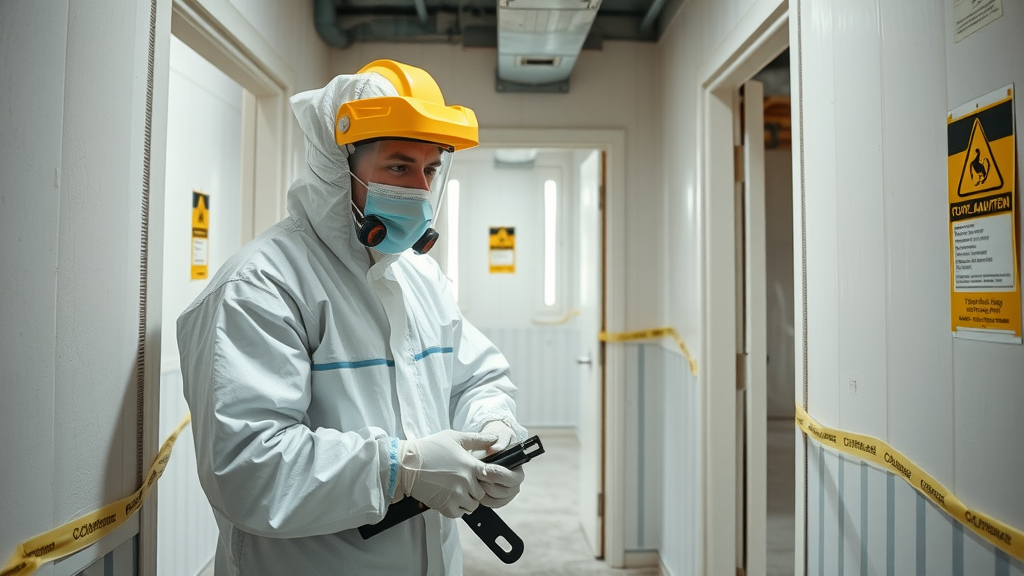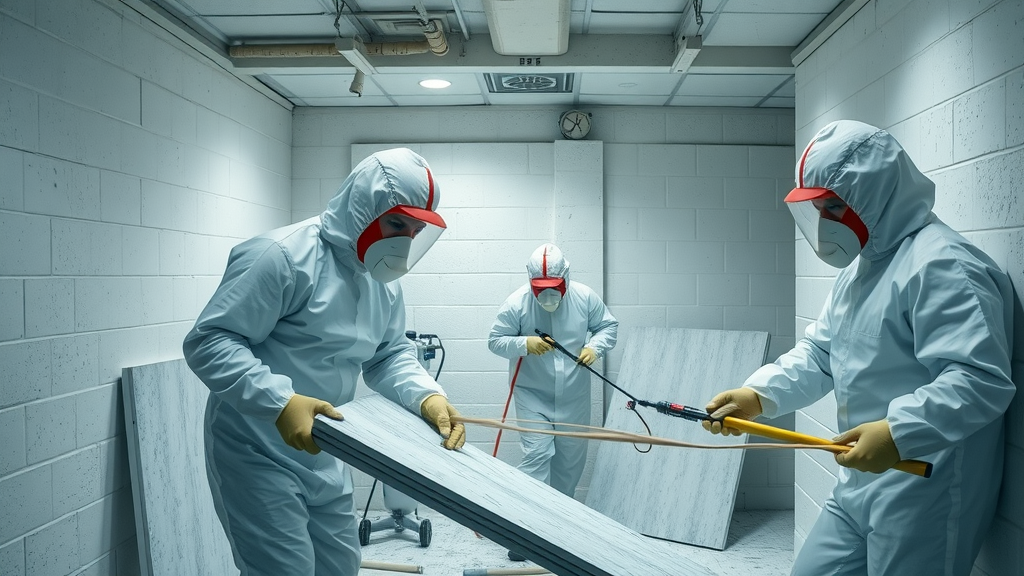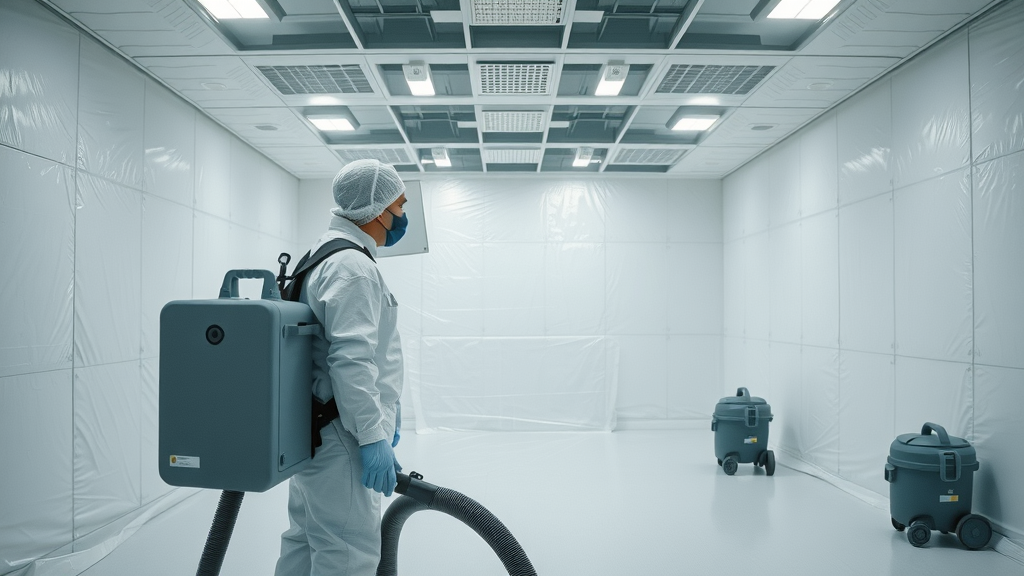Did you know over 100,000 people die every year from asbestos exposure worldwide? As shocking as it sounds, asbestos still lurks in many homes, threatening family health when disturbed. This guide gives you straightforward, practical advice on safe asbestos removal procedures—helping you understand the dangers, follow the strictest work practice standards, and make the right decisions to safeguard your loved ones from this hidden health risk.
Why Safe Asbestos Removal Procedures Matter: A Wake-Up Call for Every Homeowner
- Did you know the WHO estimates over 100,000 people die annually due to asbestos exposure? Understanding safe asbestos removal procedures is not just prudent—it's essential to protecting your family.

The importance of safe asbestos removal procedures cannot be overstated. Asbestos fibers, once airborne, are invisible threats that can linger in your home for decades and cause severe health hazards, including lung cancer and mesothelioma. Every homeowner must prioritize work practice and occupational safety when dealing with any suspicion of asbestos. The risks are not merely theoretical; they affect real families and communities, often with lifelong consequences.
Responsible building owners should recognize that even minor renovation projects can disturb asbestos-containing materials. The only way to truly protect your family from asbestos exposure is through careful planning, using proper protective equipment, and—if needed—bringing in qualified asbestos professionals. Authorities such as the U.S. EPA and OSHA stress that, when it comes to safe asbestos removal, safety and health must always come first.
Key Insights: What You’ll Gain from This Guide on Safe Asbestos Removal Procedures
- How to identify asbestos risks in your home
- The step-by-step process for safe asbestos removal procedures
- Critical safety and health rules and work practices
- When and why to hire an asbestos professional
- Regulations and legal requirements around asbestos abatement
By the end of this guide, you’ll know how to spot asbestos risks in your living space, follow industry-standard removal procedures, and understand why hiring the right asbestos professional can mean the difference between dangerous exposure and true peace of mind. We’ll break down the regulations, demonstrate what protective equipment is essential, and even arm you with checklists and FAQs—everything you need to prioritize safety and health for your family.
Understanding the Health Risks: Why Safe Asbestos Removal Procedures Are Vital
How Asbestos Exposure Threatens Family Health
Exposure to asbestos is a grave health risk. Inhaling even microscopic asbestos fibers can lead to a buildup in the lungs, resulting in diseases like asbestosis , lung cancer, and the rare but deadly mesothelioma. These conditions often manifest years, even decades, after exposure—meaning you may not know you’re at risk until much later. The occupational safety of workers and the health of building occupants are at stake when safe work area practices are neglected. There’s no such thing as a “safe” level of asbestos exposure, making safe asbestos removal procedures absolutely essential.
Children and the elderly are especially vulnerable to the dangers of asbestos, as their developing or weakened respiratory systems are less able to handle the onslaught of hazardous fibers. That’s why building owners, homeowners, and renters alike must be vigilant, avoiding actions that could disturb suspected asbestos-containing materials. Routine maintenance and renovations should always factor in the potential health hazard of asbestos in older building materials.
The Link Between Asbestos and Occupational Safety and Health
In the United States, asbestos removal is regulated for good reason—it directly impacts occupational safety and health. Many workers in construction, demolition, and carpentry face a significant health hazard when handling or removing asbestos-laden materials. OSHA guidelines state that even small home remodels require due diligence, as disturbing asbestos can expose not only workers but also household members to risk.
Abiding by safety and health administration protocols reduces legal liability, prevents costly contamination, and protects people from tragic outcomes. Building owners have a responsibility to ensure work areas adhere to established asbestos regulations, and anyone involved in removal must use proper work practice to prevent exposure to asbestos fibers.
"No level of asbestos exposure is considered safe." – U.S. Environmental Protection Agency
Identifying Asbestos: First Steps Toward Safe Asbestos Removal Procedures
Common Locations of Asbestos in Residential Work Areas
- Insulation in attics and walls
- Vinyl floor tiles
- Cement sheet products
- Roofing shingles and siding

Before you can ensure safe asbestos removal procedures, you must first know where to look. Asbestos fibers are commonly found embedded in attic and wall insulation, especially in homes built before the 1980s. Other common building materials harboring asbestos include vinyl floor tiles, cement sheets (often in older bathrooms), certain roofing shingles, and external siding. These hidden hazards aren’t always obvious on sight alone, making the need for an asbestos professional all the more urgent when in doubt.
If you suspect your home may contain any of these materials, avoid disturbing them until they are inspected. Never drill, cut, or sand unknown surfaces in older buildings, as this can release harmful asbestos fibers into the air—potentially contaminating your entire work area and putting your family's health at risk.
When to Call an Asbestos Professional for Inspection
If you live in a house built before 1990, or if your renovation plans will disturb old building materials, it’s wise to bring in a certified asbestos professional . These experts are trained to identify, sample, and test suspected materials using strict occupational safety and work practice methods. DIY test kits rarely capture the full risk, while professionals know how to avoid accidental asbestos exposure.
You should always opt for a licensed contractor if you find damaged insulation, crumbling wall panels, or if your home has never been inspected for asbestos. They’ll determine if safe asbestos removal procedures are necessary and help you develop an abatement plan that complies with up-to-date asbestos regulations, keeping your family’s safety and health at the forefront.
Visual Clues and Mistakes to Avoid
Many homeowners mistakenly assume that asbestos is only present in rare, unusual materials. In reality, it often looks like ordinary insulation, floor tiles, or siding. Some visual clues include gray-white fibrous textures in insulation and unusually heavy cement sheets. However, never rely on appearance alone: there’s no safe way to identify asbestos without laboratory testing.
Don’t scrape or sand unknown surfaces to “check”—this work practice is extremely dangerous, as it can immediately dislodge asbestos fibers into your work area. Always err on the side of caution and call a professional, as improper handling of asbestos materials risks contaminating your home and exposing everyone to serious health risks.
Asbestos Regulations and Safety and Health Administration Guidelines for Removal
Understanding Local and Federal Asbestos Regulations
Across the United States, asbestos regulations are strictly enforced by local, state, and federal agencies. The U.S. Environmental Protection Agency (EPA) and Occupational Safety and Health Administration (OSHA) each have detailed rules about the removal, handling, and disposal of asbestos-containing materials—these guidelines are known as asbestos abatement regulations . Ignoring them can lead to heavy fines, legal trouble, and, most importantly, significant health risks.
It’s critical to consult your state’s health administration or official website for region-specific rules. For instance, some local codes may require building owners to notify neighbors or post warning signage before starting any removal of asbestos. Ultimately, compliance with asbestos regulations isn’t just about legality—it’s about protecting your family’s health, the safety of workers, and your broader community from dangerous asbestos exposure.
Role of Occupational Safety and Health Administration in Safe Asbestos Removal Procedures
OSHA’s role centers on assuring that all asbestos removal projects maintain the highest safety standards. OSHA regulations require the strict isolation of work areas, routine air monitoring, medical checks for workers, and detailed record keeping. Every step of the safe asbestos removal procedures must prioritize safety and health—minimizing airborne fibers and ensuring that no unauthorized individual is exposed.
Contractors must be certified in OSHA-approved work practice methods, including the use of HEPA filter vacuums and sealed containment systems. Remember, following safety and health administration protocols isn’t just for large abatement sites—even small residential jobs must meet these standards to prevent occupational safety incidents and enhance public health outcomes.
| Regulating Body | Main Focus | Key Requirements |
|---|---|---|
| OSHA | Worker safety & occupational exposure | Certification; training; PPE; air monitoring; containment of work area |
| EPA | Public health & environmental protection | Notification before abatement; approved removal/disposal of asbestos waste |
| Local Codes | Community-specific safety and health | Additional permits; neighborhood notification; local work practice standards |
Preparing the Work Area: Crucial Steps in Safe Asbestos Removal Procedures
Site Isolation and Sealing the Work Area

Before starting any removal of asbestos, the work area must be completely isolated and sealed to prevent asbestos fibers from spreading. This involves covering doorways, vents, and flooring with heavy-duty plastic sheeting, securing all seams with industrial-grade tape, and placing warning signs to restrict entry. Correct site isolation is a cornerstone of safe asbestos removal procedures, as it limits contamination and protects both workers and building occupants.
This containment process is not optional—both EPA and OSHA standards require it for all asbestos abatement projects. Proper work practice also means using negative air pressure machines within the sealed area, drawing airborne fibers and dust into HEPA filter systems to further reduce exposure risks.
Personal Protective Equipment: From HEPA Filter Masks to Coveralls
- HEPA filter respirators
- Disposable gloves and suits
- Eye protection and shoe covers
For anyone who must enter a work area where asbestos removal is taking place, personal protective equipment (PPE) is mandatory. Certified asbestos professionals use HEPA filter respirators to block inhalation of microscopic fibers, full-body disposable suits to prevent fiber contamination, safety goggles, and special shoe covers—all to shield workers from direct contact with dangerous asbestos fibers.
Never cut corners on protective equipment. Building owners and contractors alike must ensure that PPE is worn, changed frequently, and disposed of correctly to avoid tracking asbestos waste outside the work area. Proper PPE not only protects the individuals conducting removal but also safeguards everyone else who might enter the building afterward.
Executing Safe Asbestos Removal Procedures: Step-by-Step
Methods Used by Asbestos Professionals

Certified asbestos professionals use specialized work practice methods to remove asbestos safely. First, the work area is sealed and negative air pressure machines are set up. Materials are wetted thoroughly before removal, which reduces the chance of asbestos fibers becoming airborne. Panels and insulation are carefully detached while keeping the area damp at all times. As materials are collected, they’re sealed in leak-proof containers for safe waste disposal.
During this process, all tools and surfaces are routinely checked for contamination, and disposable coverings are used to further minimize the spread of asbestos fibers. The discipline and precision of these steps ensure that asbestos abatement meets or exceeds all local and federal asbestos regulations.
Proper Handling and Disposal of Asbestos Materials
Safe asbestos removal procedures don’t end with taking items out of a home. Every fragment, no matter how small, must be handled as hazardous waste. Contractors use two-layer, sealed bags or barrels clearly labeled as asbestos waste. These are then transported by licensed haulers to approved waste disposal sites, following all legal regulations governing asbestos removal.
Homeowners should never attempt to dispose of asbestos materials through regular trash collection! Illegal dumping poses a severe health hazard to sanitation workers and the public. Responsible building owners keep all records of waste disposal, demonstrating compliance and protecting their property’s value and safety.
Minimizing Asbestos Exposure during Removal Operations
Consistent with best work practice, contractors ensure asbestos-containing materials remain wet throughout the removal process, use only HEPA-equipped vacuums, and maintain negative air pressure in the work area until post-removal clearance. This minimizes the escape of harmful fibers and reduces the risk to both workers and bystanders.
It is imperative to avoid shortcuts. Air monitoring, surface cleaning, and sequential decontamination steps must all be executed before the area is reopened. By doing so, homeowners can be confident that even the most invasive abatement operations won’t compromise safety or health.
"Always wet asbestos-containing materials before removal to minimize airborne fibers." – Licensed Asbestos Abatement Technician
Post-Removal Cleaning and Verification after Safe Asbestos Removal Procedures
Final Work Area Cleaning with HEPA Filter Equipment

Once asbestos has been removed, detailed cleaning of the work area is essential. Commercial-grade HEPA filter vacuums are used to pick up even the smallest dust particles and asbestos fibers left behind. Surfaces are then wiped down with wet cloths, and all disposable barriers and garments are safely bagged and discarded according to regulations.
This careful process removes any residual contamination, ensuring that no airborne fibers remain. Post-removal cleaning should never be rushed; thoroughness here is the final line of defense in protecting health after asbestos abatement is completed.
Air Quality Monitoring: Ensuring the Absence of Asbestos Fibers
Industrial hygienists or licensed asbestos professionals run air monitoring tests to verify the safety of the cleaned area. These tests involve drawing air samples through filter cassettes, which are then examined under powerful microscopes for evidence of asbestos fibers.
Only when air quality meets or surpasses government-established standards should the area be declared safe for reentry. Skipping this step could lead to lingering health risks and legal violations, so insist on independent verification before anyone returns to the remodeled space.
Professional Clearance and Documentation Requirements
After cleaning and air testing, professional clearance must be obtained. This involves a final inspection by a certified asbestos professional, who examines all documentation, verifies air monitoring results, and ensures every work practice has been carried out correctly.
Homeowners should request (and keep) copies of all abatement, cleaning, and clearance reports. These records are invaluable for future renovations, home sales, or insurance claims, as they prove proper asbestos removal procedures were followed.
Hiring an Asbestos Professional: What Homeowners Should Know to Ensure Safe Asbestos Removal Procedures
Qualifications to Look for in Asbestos Removal Contractors
To guarantee safe asbestos removal procedures, only hire contractors with current licenses, specialized abatement training, and a solid reputation for work practice excellence. Look for evidence of OSHA and EPA compliance, proof of insurance, and certifications in asbestos abatement.
Reliable contractors will provide references, written contracts, and full documentation of their methods and disposal plans. Choosing qualified professionals isn’t just about legality—it’s the best way to ensure your family’s long-term safety and avoid accidental asbestos exposure.
Questions to Ask About Work Practices and Safety and Health Records
Before signing a contract, ask the contractor:
- What is your experience with residential asbestos removal?
- Can you provide safety records and references?
- Which work area containment and HEPA filter procedures will you use?
- How will asbestos waste be handled and disposed of?
- Will air quality monitoring and clearance be included?
Asking these questions helps you confirm the contractor’s commitment to safety and health, and ensures they use state-of-the-art protective equipment and follow up-to-date occupational safety protocols.
Maintaining Long-Term Safety After Safe Asbestos Removal Procedures
Routine Inspections and Preventive Measures
After safe asbestos removal procedures, it’s critical to maintain regular inspections—especially in older homes or multi-unit buildings. Schedule annual check-ups with a reputable asbestos professional to examine remaining building materials for signs of wear or potential damage. Preventive action includes monitoring for leaks, cracks, and structural changes that could reexpose hidden materials.
Keeping detailed records and responding quickly to new risks can help prevent future asbestos exposure, protecting both your family and your home’s value. Proactive building owners establish trust with tenants and neighbors by prioritizing continued occupational safety.
Risk Management and Ongoing Occupational Safety

Long after the initial removal of asbestos, successful risk management involves thorough record-keeping and regular training for anyone who might handle asbestos materials. Make occupational safety and health a priority—from the superintendent to everyday maintenance staff. Remind everyone that any unexpected discovery of potentially hazardous building material warrants immediate action and professional assessment.
- Schedule regular checks with asbestos professionals
- Keep records of all abatement and repairs
People Also Ask
What is the safest way to remove asbestos?
- The safest way to remove asbestos is to hire a licensed asbestos professional who follows established work practice rules, utilizes protective equipment, and meets all safety and health regulations. Full containment, wet methods, and negative air pressure are essential.
What are the safety procedures for asbestos?
- Safety procedures for asbestos include site isolation, use of HEPA filter respirators, wetting asbestos materials before removal, and adhering to strict disposal protocols to protect against asbestos exposure.
How do contractors remove asbestos?
- Contractors remove asbestos by sealing off work areas, wearing proper PPE, executing abatement steps to safely remove asbestos, placing it in sealed containers, and performing post-removal air monitoring per asbestos regulations.
Is it safe to be in house during asbestos removal?
- No, it's unsafe. Safe asbestos removal procedures require strict containment and isolation. Occupants should not be present during removal to avoid exposure to hazardous fibers.
Real-World Examples: Successful Asbestos Removal and Work Practice Improvements
- Home remodel with zero asbestos exposure due to diligent abatement
- How a certified professional prevented health risks in a multifamily building
In one recent case, careful planning and strict adherence to safe asbestos removal procedures meant a full home remodel was completed with zero asbestos exposure . Every work area was sealed thoroughly, personal protective equipment was used without exception, and all waste was tracked to final disposal. This best work practice protected the health of contractors and homeowners alike. Likewise, in a multi-family building, a certified asbestos professional’s inspection detected hidden cement sheet asbestos, preventing disastrous exposure and saving lives.
Common Myths about Safe Asbestos Removal Procedures
- 'Painting over asbestos is safe'—false!
- 'Only old buildings have asbestos'—not always true.
Many people believe they can simply paint over asbestos-containing materials, but this does not prevent asbestos fibers from escaping if the surface is later damaged. Another common myth is that only pre-1980s homes contain asbestos; in reality, asbestos sometimes appears in newer homes and imported building materials, making regular inspections and safe asbestos removal procedures essential for all property owners.
Checklist for Homeowners: Steps to Ensure Safe Asbestos Removal Procedures
- 1. Identify suspected asbestos
- 2. Contact an asbestos professional
- 3. Review work area containment plan
- 4. Request safety and health documentation
- 5. Schedule post-abatement clearance testing
This checklist is your roadmap to making sure every step of safe asbestos removal procedures is followed, keeping your home and family protected all the way through from identification to post-abatement safety verification.
FAQs about Safe Asbestos Removal Procedures
-
Can I remove asbestos myself?
DIY removal is highly discouraged. Even minor mishandling can result in hazardous asbestos exposure. Always engage a certified asbestos professional for any work involving potential asbestos materials. -
How much does professional removal cost?
Costs vary widely based on work area size, material type, and regional regulations. Homeowners should expect to pay a few thousand dollars on average for safe asbestos removal procedures, but it’s worth every penny for your family's health. -
Do all states have the same asbestos regulations?
No. Regulations differ by state and locality. Check your local health administration or the official website of your state government for the most up-to-date rules. -
What signs indicate leftover asbestos?
Visible fibers, unexplained dust, or persistent air quality issues after removal could signal incomplete abatement. Hire a professional for inspection and post-removal air quality testing to confirm your home is asbestos-free.
Best Resources for Further Guidance on Safe Asbestos Removal Procedures
- EPA and OSHA Asbestos Guidelines
- Local health administration contact information
- Certified asbestos abatement contractor lists
For more detailed and up-to-date advice, consult the official website of the United States government, EPA, or OSHA. These organizations provide downloadable guides, fact sheets, and contractor databases to assist building owners in all aspects of asbestos removal.
Key Facts at a Glance: Safe Asbestos Removal Procedures
| Step | Required Equipment | Safety Guidelines | Legal Requirements |
|---|---|---|---|
| Identification | Inspection tools, lab analysis kits | Do not disturb; visually assess only | Call a certified professional |
| Preparation | Plastic sheeting, warning signs | Seal all entry points, set up containment | Notify authorities as required |
| Removal | HEPA filter respirator, coveralls | Wet methods, minimize breakage | Follow all OSHA/EPA guidelines |
| Disposal | Sealed waste containers | Label and transport to proper site | Proper waste disposal documentation |
| Clearance | Air monitoring kits | Professional inspection, cleaning | Final government or contractor approval |
Watch: Safe Asbestos Removal Procedures in Action (Video Demonstration)
See best work practice in motion—watch how certified contractors use protective equipment, maintain sealed work areas, and dispose of asbestos safely.
This video explains why only qualified professionals should handle asbestos, reviews PPE in detail, and includes real-world examples of what families can do to minimize exposure risks during abatement projects.
Final Considerations for Choosing Safe Asbestos Removal Procedures and Protecting Your Loved Ones
- Choosing licensed asbestos professionals and following strict work practices are vital steps. Protecting your family means staying informed, compliant, and proactive.
Take Informed Action: Ensure Safe Asbestos Removal Procedures for Your Family’s Future
Safe asbestos removal procedures are a crucial investment in your family’s well-being. Make deliberate choices, follow every regulation, and always rely on certified professionals to keep your home truly safe.
To further enhance your understanding of safe asbestos removal procedures, consider exploring the following authoritative resources:
-
The U.S. Environmental Protection Agency’s (EPA) guide on “Protect Your Family from Exposures to Asbestos” offers comprehensive information on identifying asbestos-containing materials in your home and the necessary steps to manage or remove them safely. ( epa.gov )
-
The Canadian Centre for Occupational Health and Safety (CCOHS) provides detailed “Asbestos - Control Strategies for Workplaces,” outlining effective control measures and best practices for handling asbestos in occupational settings. ( ccohs.ca )
These resources will equip you with the knowledge to implement safe asbestos removal procedures and protect your family’s health.
 Add Row
Add Row  Add
Add 




Write A Comment